Table of contents
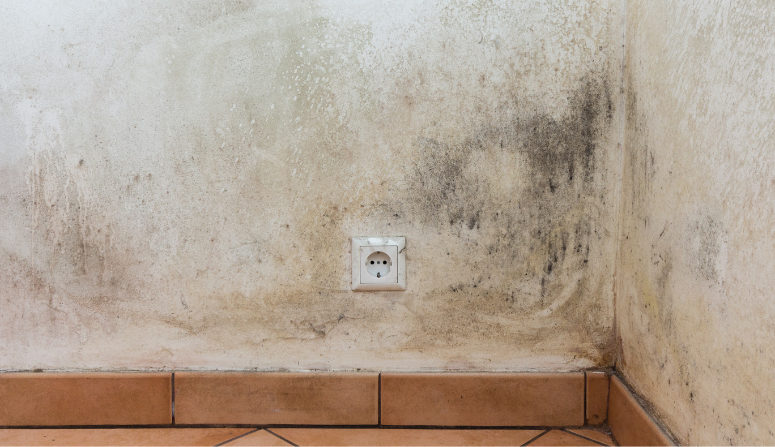
Many times, we don't know how to remove the musty smell from our house, and this is a very common problem. Mold and mildew require special attention. Walls, closets, clothes, carpets, floors, among other places are subject to suffer from this, so we need to know how to identify and deal with this situation.
See_also: Hexagonal veneer: 40 ideas for using this geometric trendMold is fungus in its early stages, when it forms that raised grayish-grey layer. In this case, you can easily remove it by wiping with a damp cloth or brushing. The appearance of mold is very common on wood, formica, ceramics and fabrics. Mold, on the other hand, is fungus in an advanced stage, which leaves little black dots on the spot. It is very difficult to get rid of when foundMold can start as just a small stain and quickly become a health hazard, especially for people who have allergies and asthma.
How to prevent mold in closets and closets
According to the personal organizer Ingrid Lisboa, the first thing we have to think about when we talk about mold in cabinets is the location: "It is important that it is a room that has incidence of sunlight, even if it does not hit directly on the furniture. When there is no incidence of sunlight, there is more possibility of humidity, and this ends up causing mold," she explains.Be careful with the wall the furniture is leaning against so that it does not border more humid places, such as the bathroom, for example.
An important tip is to let the closet and the room breathe: "Letting the closet breathe is not just opening the door, there must be air in and out in the room as a whole. Open the window and the door for the air to circulate at least two days a week", recommends the professional. Don't forget to open the drawers as well.
In the case of the closet, a mistake that aids in the formation of mold is the excess of items inside. A crowded closet doesn't leave room for the air to circulate. For prevention and cleaning, Ingrid says it is important to avoid products that make water, because if the package leaks it can ruin clothes and bags. She takes the opportunity to indicate some homemade recipes that can help:
- To remove the smell: use a mixture of half water and half white wine vinegar. This recipe also removes that "white powder" that characterizes the mold. A mixture of water and detergent can also be used to get the dirt out, but you will need to use the vinegar mixture to get the smell out.
- To prevent mold: Put it in a tulle bag or wrap it in gauze. Reminder: you can't use loose chalk. You can also use silica, but it is more difficult to find. Anti-mildew tablets inside the cabinets can also minimize the problem.
Bathrooms, kitchens and service areas deserve special attention
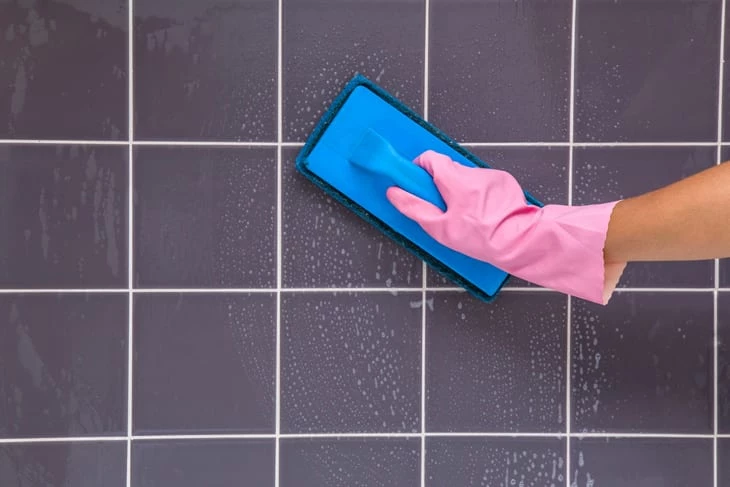
The bathroom, without a doubt, is the most humid place in the house, therefore it is very susceptible to mold. It attacks mainly taps, grout, and the shower box. The kitchen and the service area, especially in apartments, are also usually big targets for this problem, because they usually suffer from humidity and lack of ventilation. To clean these environments, try to use eye protection,gloves and a face mask to avoid contact with the spores released by the fungus. Also open the windows or use a fan.
Paula Roberta Silva, manager of the Dona Resolve brand, suggests this recipe: "In a bucket, pour a liter of water to 100 ml of bleach and spread it over the environment affected by mold, leaving it to act for 30 minutes. This should make it easier to remove the stain with a clean cloth. If the stain is persistent, you can repeat the operation. You can also use a stiff-bristled brush toThen rinse the area with the help of a damp cloth.
If this method does not work, there are products specially formulated for mold and mildew on walls and glass that are stronger. You can also use a surface cleaner that has chlorine in its active composition. But remember to test on a small area of the wall first and never mix cleaning solutions, as this can generate dangerous chemical reactions.
To avoid the proliferation of fungus in these places, some attitudes can help:
- Lay out towels, curtains, and bathroom rugs to dry. If possible, wash them at least once a week.
- Keep humid environments well ventilated and dry.
- To prevent mold formation in the long term, consider installing an electric dehumidifier in the most severely affected areas.
- You can also use anti-mildew paint, found in most construction stores. Always read the manufacturer's instructions and check that the product is recommended for your type of wall.
- Walls and ceilings with a good coating will also be less affected by condensation and, consequently, mold.
- Fix leaks the moment they are discovered to prevent moisture from seeping into cavities and under the floor.
Fabrics and upholstery

Fabrics and upholstered furniture are also susceptible to mold and mildew, and in these cases, cleaning the stain is a little more difficult. Unlike walls, they cannot be cleaned with bleach. The best option is to use a neutralizing shampoo, which can be spread with the help of a vacuum cleaner with a water filter. Then, wipe it with a dry cloth and let the sofa dry in a shady, well-ventilated place. Don'tAnother option is to use a homemade recipe of half a cup of white vinegar and two teaspoons of baking soda to a liter of water.
Leather upholstery, one of the materials most sensitive to mold, can be cleaned with white vinegar. According to Paula, there is no mold that resists vinegar, it is the greatest ally for the removal of any type of mold.
In the case of leather clothes, avoid covering them with plastic covers, because this fabric does not transpire. The ideal is to store them in vacuum packaging and expose them to the sun every 3 months. To remove mold stains from jackets and other leather clothes, the ideal is to use apple vinegar, because it has a more pleasant smell. After cleaning, a good tip is to spread almond oil with your hands. Remove the excess witha dry cloth and you will give your piece an extra shine.
In the case of cotton and linen clothes, how long the mold and mildew stain remains on the fabric is what will determine whether it can be removed or not.Therefore, the tip for very old stains is to opt for dyeing the clothes, which can even gain a new color. To avoid mold on these types of fabrics and delicate clothes in general, the ideal, according to Paula, is to store everything in TNT or cotton bags.
Special tip for towels
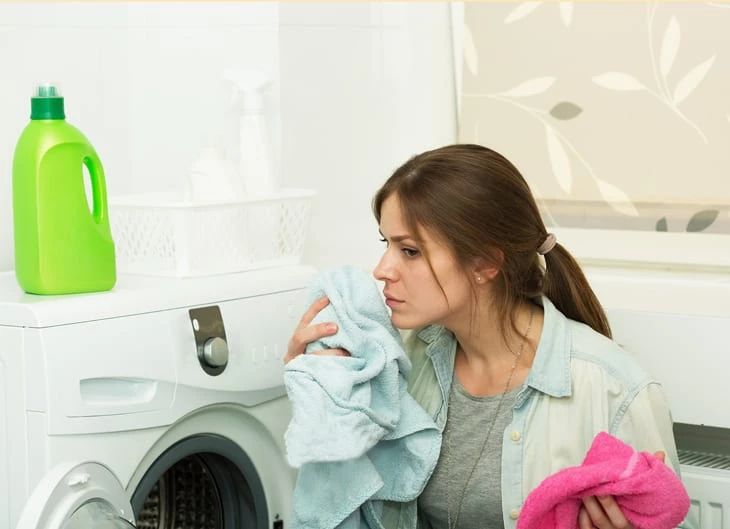
To avoid the strong musty smell in towels that dry indoors, stay tuned for another recipe from the manager of Dona Resolve.
Step-by-step instructions:
- Place the towel in the washing machine, ideally washing up to 3 pieces at a time. Add the amount of liquid or powder soap as usual and fill the machine with water to the indicated measure.
- When the machine reaches the water level, add 1 cup of white vinegar, letting the towels soak for 30 minutes.
- Rinse the towels in the machine as normal. After rinsing, wait until the machine is at the indicated water level. Add the softener and another 1 cup of white vinegar.
- When you have finished spinning, remove the towels immediately. We recommend not leaving them for too long in the machine, otherwise the bad smell will return and all the work will have been lost.
- Then hang the towels on the clothesline, preferably in the sun.
Tips:
- Instead of white vinegar, you can also use baking soda, which will produce the same effect. But never use the two together.
- To enhance the smell of the towels, store them with scented sachets.
- And, finally, never leave damp towels in the bathroom. The best thing to do is to leave them exposed in a ventilated place to eliminate the bad smell.
Carpets and flooring
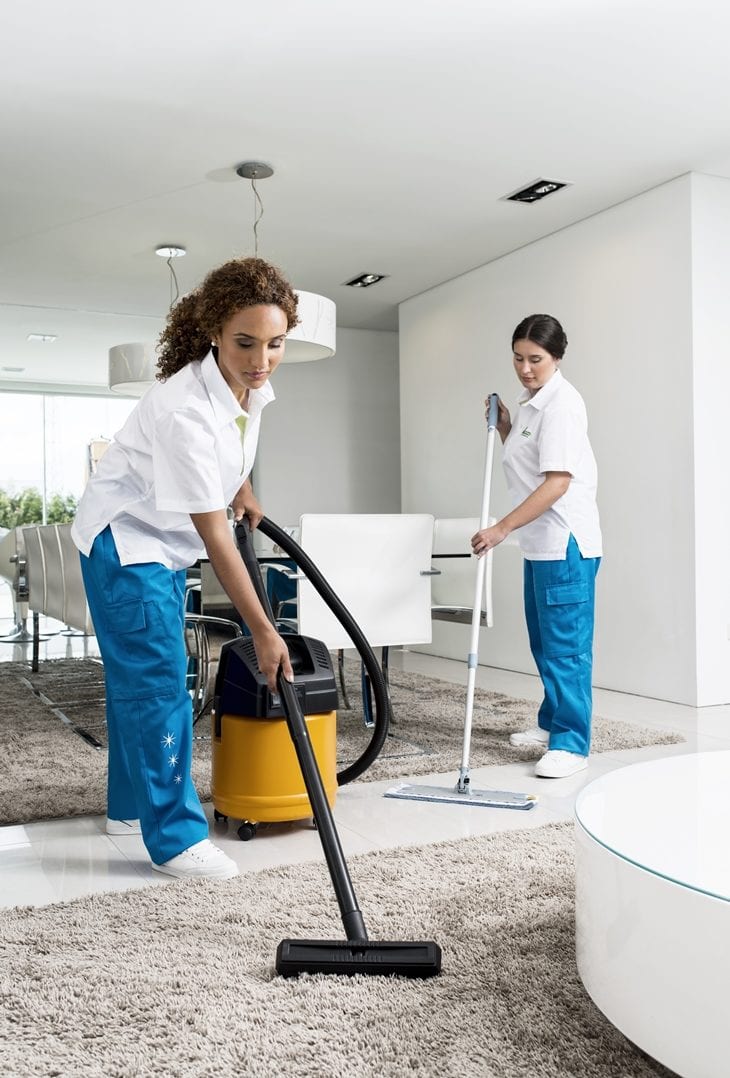
Mold is very harmful to carpets because it compromises the fibers and is very difficult to remove, so vinegar once again can be a great ally in this cleaning. Although this ingredient does not kill all species of mold, it can delay its proliferation and even prevents stains. Put the liquid in a spray bottle and apply it to the area with mold. Use the vinegar pure and let it beThen scrub the spot with a stiff brush. Remove it with water and make sure you rinse it well, to prevent the vinegar smell from remaining.
If your carpet is removable, take it outside and leave it out in the sun to dry for 48 hours. It must dry completely so that there is no moisture, otherwise mold will return. Also apply the antifungal solution to the carpeted part of the floor and leave it to dry. If your carpet is glued to the floor, turn on the lights in the room and dry it with a fan, dehumidifier, or the "blower" function on your computer.Then apply an anti-mildew spray to the carpet.
Baking soda also helps in removing odors, and you can mix it with warm water and make a paste to apply on the stain. Let it be absorbed and remove the paste after some time. There are also cleaning products for carpets and rugs.
For hardwood floors, use a scraper or a blunt knife to remove mold from the top of the wood, then vacuum. Next, sand the area and apply an antifungal product, following the label instructions. Let the area dry briefly, sand it and apply the antifungal again. Finally, allow the area to dry completely and clean up any residue that remains.The same goes for wooden furniture.
The power of silicone
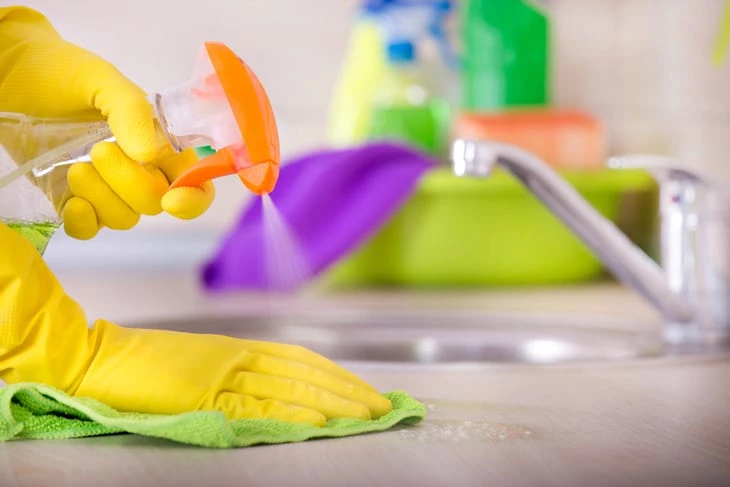
You must be wondering if silicone helps to fight mold, right? But, actually, the products to fight mold, when the fungus has already taken over, do not have silicone in their composition. The power of this substance is in its preventive action, which helps to avoid humidity and, consequently, the appearance of this problem.
According to Irineu Bottoni, coordinator of the Silicone Sector Commission of the Brazilian Chemical Industry Association, Abiquim, the most commonly used water repellents to reduce water penetration and humidity are silicone-based: "When in contact with bricks, blocks, cement, wood, among others, the water repellent silicone makes these substrates impermeable towater, reducing its humidity and, consequently, eliminating mold and the green or black stains generated in these environments because of problems resulting from the accumulation of water throughout the useful life of the construction", he explains.
In addition, silicone is also present in the formulation of many types of paints, causing the walls to reduce water absorption and protecting them against mold, right after they are painted. Regarding sealing, silicone, when applied to windows, doors, expansion joints, boxes, bathtubs, tiles, concrete floors and in bathroom and kitchen fixtures, prevents the appearance ofmolds.
"To know if he is acquiring a product with silicone in its formulation, the consumer must observe whether the label contains names such as silanes, siloxanes, and silicones, as these water repellents are also commercially described," warns Irineu.
Make your own anti-mildew

An alternative for those who cannot buy anti-mildew in stores and supermarkets is to make your own at home. It is easier than you think! Just buy the ingredients in chemical stores. Let's go to the recipe:

Now, all you have to do is put it in the cupboard and change it when the pot is full of water. The procedure is simple: remove the water, throw the calcium chloride away, wash the container and repeat the whole process. Each pot costs around R$ 2.00 (two reais) and the chloride refill, on average, R$ 0.90 (ninety cents). The big chloride bag costs R$ 10.00 (ten cents).(ten reais) and yields about 12 recharges.
But what about that protection that comes before the lid on the ready-made products found in the market? Well, the use of this protection has pros and cons and must be evaluated by you.
While it has the function of making the product last longer, it also makes it less effective, because it absorbs the moisture little by little. If you don't use this protection, the absorption will be much faster, but you will have to replace it more often. So, choose the best option for your use. If you choose to use the protection, place a piece of paper towel or a piece of filterBoth have the same effect as the original product material.
Hire a specialized company
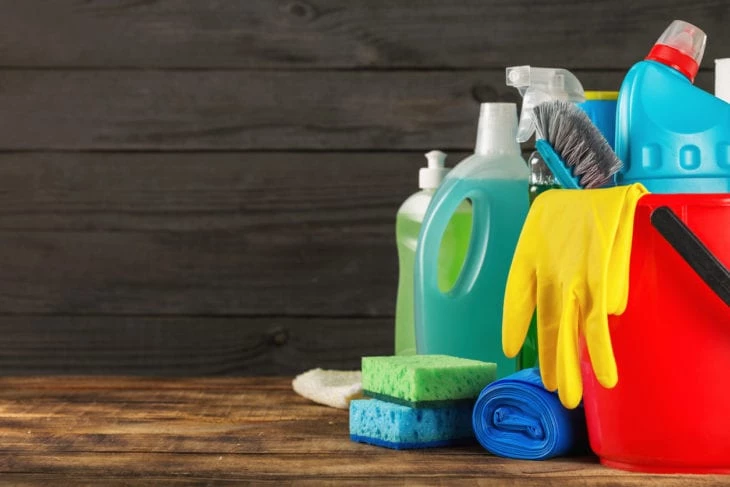
If you have a serious mold problem, it may be better to seek the help of a specialist. In the case of carpets, for example, if the mold has reached the back of the piece, it will be very difficult to recover it. According to Lilian Esteves, executive director of House Shine, a company that offers residential cleaning services, the focus of a cleaningprofessional is the reduction of dust mites and allergens in the home environment.
The service is performed by equipment that retains up to 99.97% of the micro-particles it absorbs, extracting these substances from mattresses, carpets, pillows, and sofas, releasing only clean air into the environment. "This specialized service is complementary. It must be performed at least once a month or whenever the client needs it. The equipment extracts dust mites and other agents that cause allergies,One of the differentials is the union of the cleaning that House Shine offers, and that many people already know and trust, with the power and functionality of this machine", highlights Lilian.
To perform the service, only one trained professional is needed and the cost may vary according to the franchise unit. It can be hired starting at R$ 99.00 (ninety-nine reais) per hour, while the package for half a day is around R$ 249.00 (two hundred and forty-nine reais),an upholstered cushion of up to three seats and four pillows, but the unit is always responsible for defining the time needed, since each residence has its own characteristics", Lilian advises.
See_also: Window Patterns: Types and 60 ideas for opening your home to the outside worldSuggestions for products that fight and eliminate mold
Below you will find a list of products that can help you fight and prevent mold.
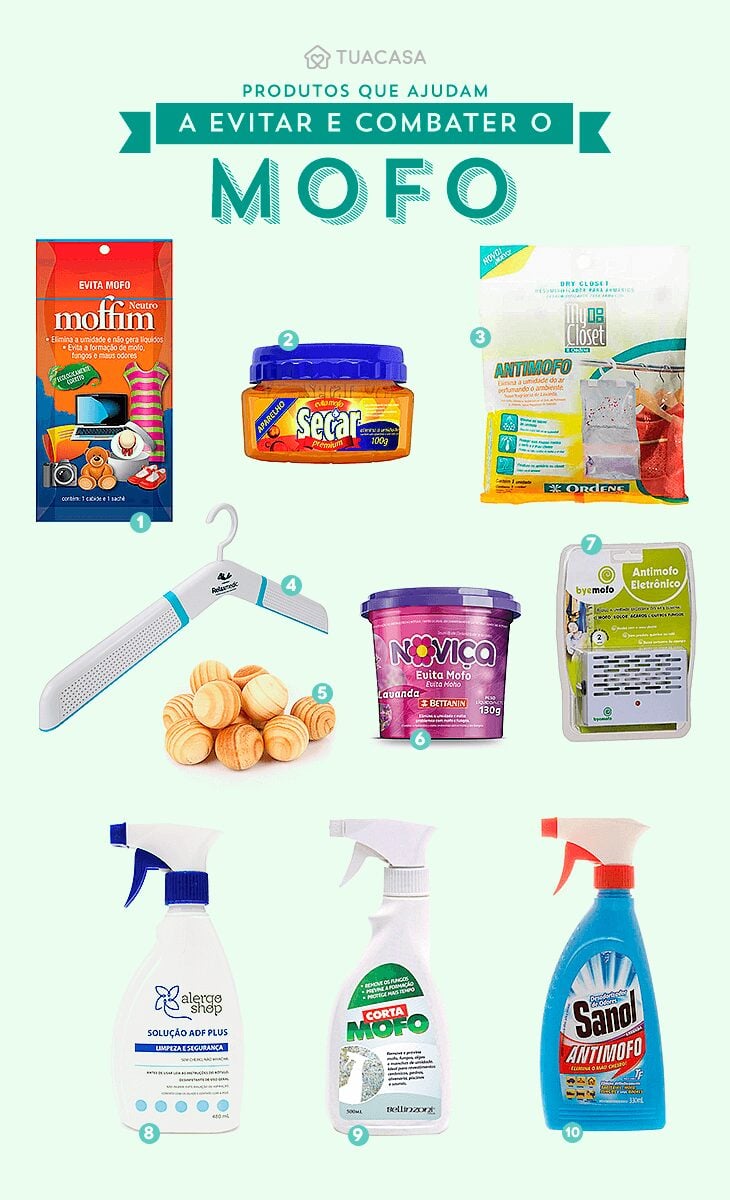
- Antimofo Moffim.
- Prevents mold Drying.
- Ordene Dry cabinet antimicrobial and dehumidifier.
- Relaxmedic Multi Dry room dehumidifier.
- Cedar Ball Dehumidifier.
- Anti Mofo Noviça Lavanda.
- Electric Antimofo Bye Mold Device.
- ADF Plus Acaricide Solution.
- Bellinzoni Mold Stopper Spray.
- Antimofo spray Sanol.
So, what did you think of these tips? With a frequent cleaning routine and the right products, the elimination of mold and mildew from the rooms becomes very easy and practical. But never forget: prevention is the best medicine! Follow the specialists' instructions correctly to avoid the appearance of these problems right away. And, of course, don't wait for the situation to get worse before you take action.


